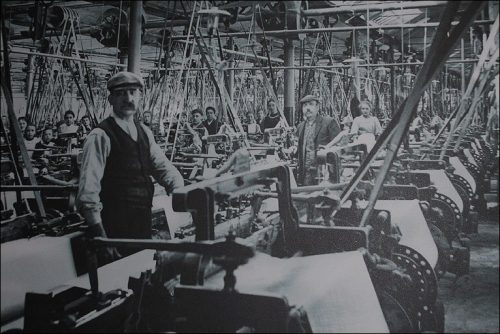We currently have a “partial government shutdown” which no one seems to notice. Most of the appropriations bills were passed and signed. The Homeland Security budget became a Continuing Resolution and is being held hostage in the Senate where Chuck Schumer has vowed “So, President Trump, you will not get your wall,”
Trump has not vetoed anything so the responsibility for the “shutdown” is not obvious. The 40,000 federal employees who are furloughed or not getting paid are over 80% Democrats. The most recent pay period will result in checks today. Then the next pay period in two weeks will be the one where the “nonessentials” will not be paid.
Schumer: “So, President Trump, you will not get your wall,” Schumer added. “Abandon your shutdown strategy. You’re not getting the wall today, next week, or on January 3 when Democrats take control of the House.”
How is this playing in the country ? Some surprises.
Ann Althouse reads the Washington Post so I don’t have to.
She notices the comments to that article on the child that died in US custody.
I’ve excerpted the parts of the article that might make a reader want to blame the father. Was the boy exploited? Was he regarded as expendable? There’s plenty else in the article that might make you want to blame the U.S. government (mainly for not giving quicker medical treatments). I would also think many readers would mostly feel sad that a boy died and bemoan poverty generally. So I was surprised at how harsh the comments were against the father. I didn’t expect this at The Washington Post. This is the most liked comment:
This child’s siblings in Guatemala are alive and well. The child was dragged to the US using money that could have paid the father’s overdue electric bill, which is not a reason to grant asylum.
I wonder how long the Democrats will let this go on if Trump does not cave in ? He seems to have a gut instinct about what Americans think.
CNN seems to think that signing MAGA hats in Iraq is some sort of crime.
CNN Pentagon reporter Barbara Starr said “a lot of questions” have been raised following President Trump’s surprise visit to troops in Iraq where he signed ‘Make America Great Again’ hats and flags.
“There’s a lot of concern because military policy, military regulation prohibits military members in uniform from doing anything that can be construed as a political endorsement. That’s what you want from your U.S. military. They’re not a political force,” Starr reported.
“How did the red hats get there? Some people are saying, well, the troops just brought them and wanted to get them signed. But even if that is the case, the question remains, there were commanders, there were senior enlisted personnel on the scene, they know the regulation. Why did this happen?” Starr asked.
The cluelessness is almost painful. Obama signed stuff when he was president.
What will the end game look like? The new House is even farther left wing than the Senate. Could the “shutdown” go on for months ?
Look at the comments to the WaPoo article.
Thank you. I am liberal myself but I get tired of people who shut off their critical thinking when it comes to brown people. This guy made a spectacularly risky decision, and his child paid the price. It’s on his head. This is, of course, on the assumption that the U.S. wasn’t negligent in the kid’s care – which is certainly possible. Nonetheless it’s his father who endangered him.
This looks like trouble for Democrats. What if Trump stares down Democrats for months ?
